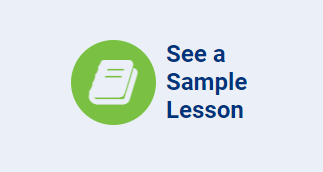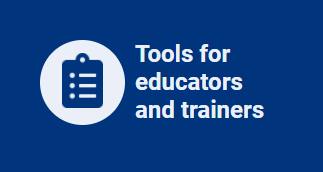Core Components
Maintaining Fidelity
It is important to understand a few key terms and concepts to successfully implement Get Real. These include fidelity, or adhering closely to the program design during implementation. Fidelity is the degree to which a program is implemented as designed. Factors that may influence fidelity include intentional changes to the program in response to conditions on-the-ground, and unintentional program modifications.
Core Components are important parts of a program that should be implemented for that program to be effective. They are required elements of an intervention or program that embody the theory and internal logic of the intervention and most likely produce its main effects. These elements define the intervention and must be kept intact to maximize the chances that it will produce outcomes like those demonstrated in the original research.
Core components may involve the implementation of the program, including the audience and setting, the implementation schedule, the program leaders, and preparation. Core components also include the content of the program activities and the teaching methods (pedagogy) used to cover that content.
Implementation Components
Audience and Setting
- Get Real: Comprehensive Sex Education That Works can be implemented in either school or non-school settings, where the instruction resembles the instruction in the classroom. Implementation in non-school settings has been successful, but it may be more difficult to retain students for the duration of the program.
- Get Real is designed for grades 6–8 or for participants ages 11–14, and the content is age appropriate for these grade levels. It could be used for grades 7–9 in some communities.
Implementation Schedule
- The classes should be scheduled so that most youth participate in most classes.
- All 27 lessons should be taught.
- For optimal effectiveness, all lessons should be taught in sequence, nine in sixth grade, nine in seventh grade, and nine in eighth grade. Effective implementation has been achieved in settings where fewer than nine lessons were taught in each grade. Core content and pedagogical components must be delivered in order to impact youth behavior.
- Ideally, lessons should be taught once per week. Lessons have been delivered two times per week with effectiveness.
- At least 45 minutes should be available for each lesson. Two lessons may be taught in a 90-minute block.
- The ideal class size is from 18 to 25 youth.
Program Leaders
- Educators for Get Real should have good rapport with youth and be trained through the Get Real Training of the Educator process. They should be familiar with the content, comfortable discussing the material, and experienced teaching skills-based programs.
Preparation
- If the curriculum is implemented in a school setting, appropriate approval should be obtained from the school and parents. If implemented in non-school settings, appropriate approval should be obtained from the host organization and parents, and steps necessary to recruit and retain the ideal group size for the full length of implementation should be taken.
- In either setting, parents and other caring adults are paramount to the success of Get Real. Schools or organizations should host a parent evening where parents can view the curriculum and ask questions. Parents should be made aware of the impact of their active participation in the curriculum, via the take-home Family Activities.
- A Family Letter and Family Activity should be sent home with each student after every lesson in the curriculum. Get Real considers parents and other caring adults to be the primary sexual health educators of youth and maintains transparent communication between educators, students and families.
Content Components
Sixth-Grade Content (9 lessons)
- Functional knowledge (i.e., information about male and female reproductive anatomy and puberty).
- Attitudes and beliefs (i.e., activities that foster discussions of abstinence and personal values, as well as activities that build the social and emotional learning skills of self-awareness, self- management, social awareness, relationship skills and responsible decision making).
- Norms (i.e., activities such as role-plays to reinforce the norm of setting and respecting limits).
- Skills, including refusal skills, responsible decision making and communication.
- Parent/caring adult communication (i.e., family letters and family activities to encourage discussion of cultural and family values around lessons in this grade).
Seventh-Grade Content (9 lessons)
- Functional knowledge (i.e., discussions around creating safe school environments, sexual identity, media literacy, STI facts, and protection methods).
- Attitudes and beliefs (i.e., activities that foster positive attitudes toward defining and maintaining abstinence).
- Norms (i.e., activities such as role-plays to reinforce taking a stand against bullying, communicating refusals, and making difficult decisions).
- Skills, including refusal skills and inter/intrapersonal skills to negotiate risky situations.
- Parent/caring adult communication (i.e., family letters and family activities to encourage discussion of cultural and family values around lessons in this grade).
Eighth-Grade Content (9 lessons)
- Functional knowledge (i.e., behaviorally relevant information such as facts about HIV and other STIs, protection methods and obstacles to abstinence).
- Attitudes and beliefs (i.e., activities that highlight qualities of healthy and unhealthy relationships and the importance of setting personal goals).
- Norms (i.e., activities such as role-plays to reinforce maintaining abstinence and honing refusal skills, correct and consistent use of protection methods, and negotiating difficult decisions).
- Skills, including refusal skills, protection methods skills, and social and emotional learning skills to communicate refusal and personal decisions.
- Parent/caring adult communication (i.e., family letters and family activities to encourage discussion of cultural and family values around lessons in this grade).
Pedagogy Components
All the activities are implemented as designed and in sequence, using the teaching strategies specified. In terms of pedagogy, this means that teachers:
- Create a safe and inclusive learner-focused environment by establishing class rights and responsibilities, including mechanisms for asking sensitive questions and actively involving participants.
- Use strategies for supporting parents/guardians as the primary sexuality educators for their children, including assigning and encouraging Family Activities, which are the primary vehicle for encouraging communication on key topics between students and parents or other caring adults.
- Answer student questions in a factual, medically accurate, age-appropriate way, directing students to their parents or other caring adult in their lives for questions about community, family and personal values.
- Implement all activities in sequence using the interactive strategies included in the lessons, which were designed to influence the theory-based risk and protective factors related to sexual risk behaviors:
- Use the varied pedagogical techniques (e.g., mini-lectures, brainstorming, games, small- group work, role-plays, and process questions) and maintain the interactive nature of the activities to engage youth and facilitate learning.
- Review learning from prior classes to enhance mastery of material and reinforce learning.
- Use the anonymous questions box technique as noted to invite anonymous questions.
- Use role-plays, following the procedure in the lessons: (1) explain and model the skills, (2) provide large-group and individual practice, and (3) offer corrective feedback to enhance the learning objectives of selected lessons.
- State key messages about important values and sexual behaviors clearly and reemphasize them repeatedly. The key message is that abstinence is the healthiest choice for middle school students. Condoms and other protection methods offer excellent protection against pregnancy and STIs when someone becomes sexually active. Young people should utilize the Social and Emotional Learning (SEL) skills of self-awareness, self-management, social awareness, relationship skills, and responsible decision making to establish healthy relationships and make healthy decisions whether in an intimate partnership or not.
- Recognize the importance and impact of values, attitudes and beliefs on teaching sexuality education.
- Use the Get Real Adaptation Guidelines as intended when prepping a lesson.
- Teach with fidelity by identifying the critical elements of the curriculum.
- Use the resources on the Get Real website: www.getrealeducation.org.
Get Real Adaptation Guidelines


